Welcome to Culver City, home to a diverse array of birds! This vibrant community is home to a wide variety of birds, including raptors, waterfowl, songbirds, and more. Whether you’re a beginner or an experienced birder, there’s something for everyone to enjoy.
With its many parks and open spaces, Culver City is a great place to observe and learn about birds.
From the majestic Red-tailed hawks soaring overhead to the busy flocks of House Sparrows that flit about, there are plenty of opportunities to observe and appreciate the beauty of birds in Culver City.
1. Anna’s Hummingbird
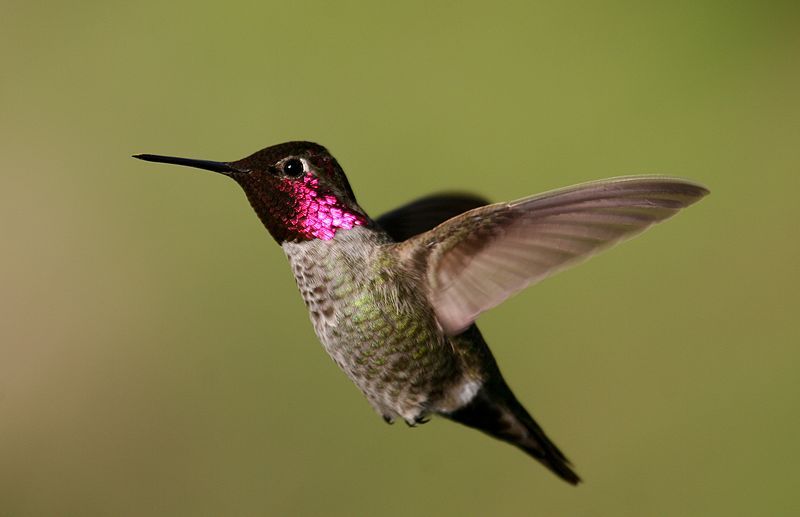
Anna’s hummingbird is a species of bird in the family Trochilidae, which is native to the western coastal regions of North America. It is a medium-sized bird and was named after Anna Masséna, Duchess of Rivoli.
In the early 20th century, the species was only found breeding in Northern Baja California and Southern California. This species of hummingbird is highly adapted to its environment.
Its small size allows it to fit into small spaces and gain access to nectar from a variety of flowering plants. It has a long, curved bill which is perfect for reaching into flowers to obtain the nectar.
The wings are long and pointed which helps the bird to fly quickly and maneuver in tight spaces.
The feathers are also iridescent, giving it a beautiful shimmering appearance in the sunlight. Anna’s hummingbird has a wide range of behaviors, including courtship displays and territorial defense.
During courtship, males will perform a flight display which involves hovering in the air and producing a loud, chirping sound. The males will then dive and swoop in a figure-eight pattern in an attempt to attract a mate.
They are also highly territorial and will drive away other hummingbirds, birds of another species, and even insects from their area. Overall, Anna’s hummingbird is a fascinating species of bird that is well adapted to its environment.
Its beautiful iridescent feathers, elaborate courtship displays, and territorial defense make it a remarkable bird to observe.
| Kingdom | Animalia |
| Phylum | Chordata |
| Class | Aves |
| Clade | Strisores |
| Order | Apodiformes |
| Family | Trochilidae |
| Genus | Calypte |
| Species | C. anna |
2. Allen’s Hummingbird
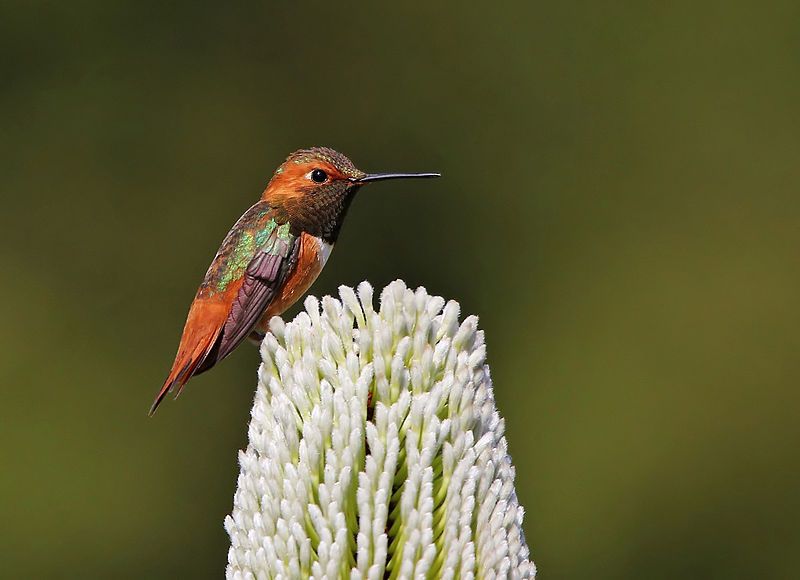
The Allen’s hummingbird is a species of hummingbird found in the western United States. It is a small bird measuring only around 3-4 inches in length, and weighing less than 0.1 ounces.
It is a brightly colored bird, with a metallic green back, white throat, and a reddish-orange patch on its throat and breast.
It feeds mainly on small insects and spiders, as well as nectar from flowers. The Allen’s hummingbird belongs to the genus Selasphorus, which is made up of seven species of hummingbirds.
This genus is found mainly in North America, but some species have been found in Central and South America. The Allen’s hummingbird is the most widespread species of the genus and is found in the western United States, from southern California to British Columbia, Canada.
It is a common resident of gardens, parks, and wooded areas, and can be seen hovering or perched on branches while searching for food.
| Kingdom | Animalia |
| Phylum | Chordata |
| Class | Aves |
| Clade | Strisores |
| Order | Apodiformes |
| Family | Trochilidae |
| Genus | Selasphorus |
| Species | S. sasin |
3. Black Phoebe
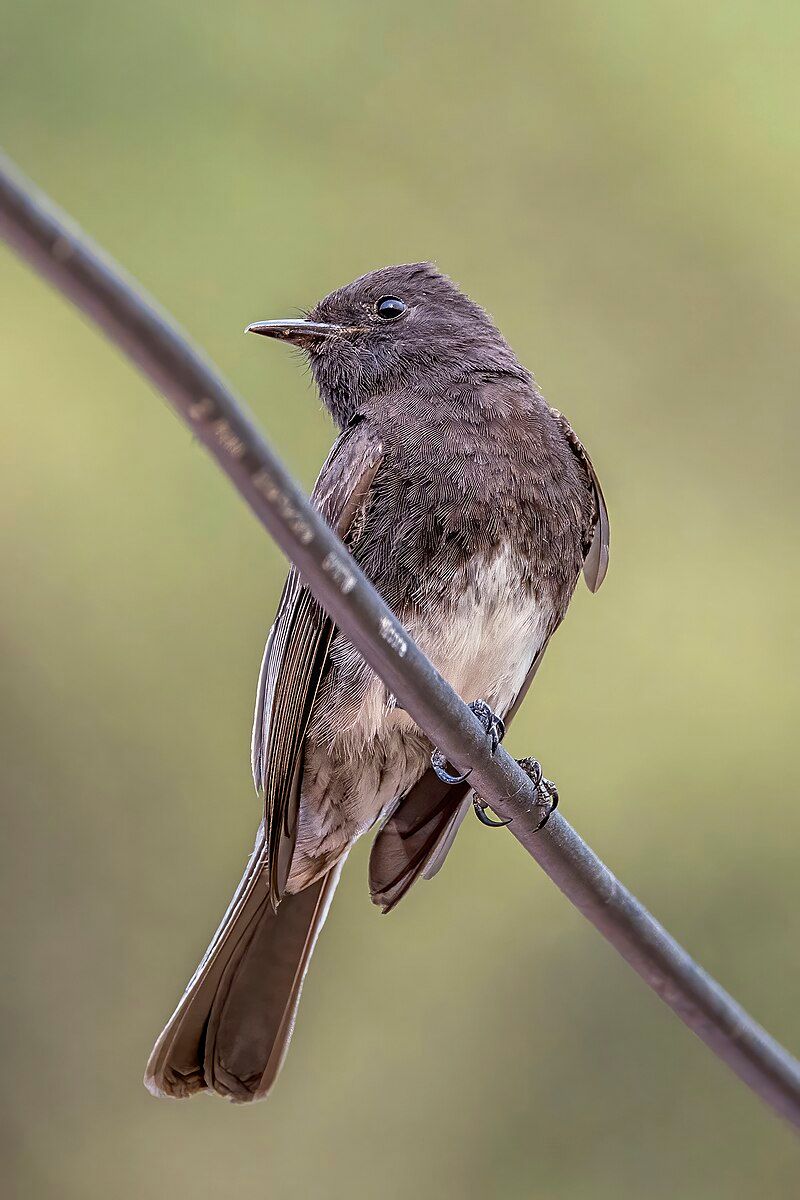
The black phoebe is a species of bird belonging to the tyrant-flycatcher family. It is native to the western region of the United States, stretching from southwest Oregon and California south into Central and South America.
Within this range, it occurs year-round and only migrates seasonally in its northernmost populations. This type of bird is unique amongst its genus because its migratory patterns are much less pronounced than other species in its family.
The black phoebe is a resilient species, able to adapt to a variety of habitats and climatic conditions. It is well suited to its environment, which allows it to thrive in the areas it inhabits.
| Kingdom | Animalia |
| Phylum | Chordata |
| Class | Aves |
| Order | Passeriformes |
| Family | Tyrannidae |
| Genus | Sayornis |
| Species | S. nigricans |
4. House Sparrow
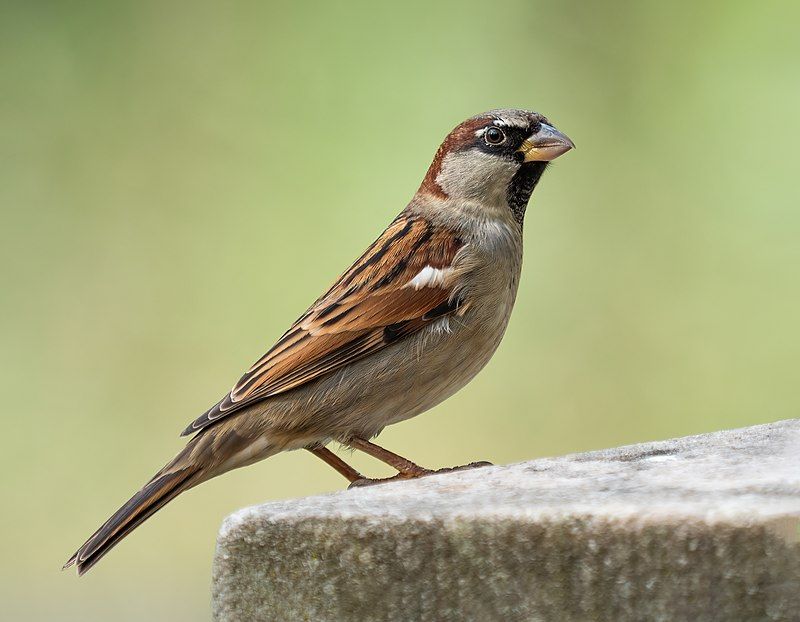
The house sparrow is a species of bird in the Passeridae family, which is found in many parts of the world. This bird is a small one, reaching a typical length of 16 cm, and a mass of 24-39.5 g.
The males of this species have distinct markings of black, white, and brown, which are brighter in color than the females and young birds, who are mostly colored pale brown and grey.
This species is a common sight in most areas of the world and is widely recognized for its vast range and coloration. The house sparrow has adapted to a variety of habitats, from urban areas to rural areas, and is found in many types of vegetation.
It is a social bird and can often be seen in flocks of up to several hundred individuals. The house sparrow is known for its ability to survive in human-altered landscapes and is often seen scavenging around people’s homes for food.
It is an important species in the ecosystem, providing pest control by consuming insects, and is also an important food source for many birds of prey.
| Kingdom | Animalia |
| Phylum | Chordata |
| Class | Aves |
| Order | Passeriformes |
| Family | Passeridae |
| Genus | Passer |
| Species | P. domesticus |
5. American Crow
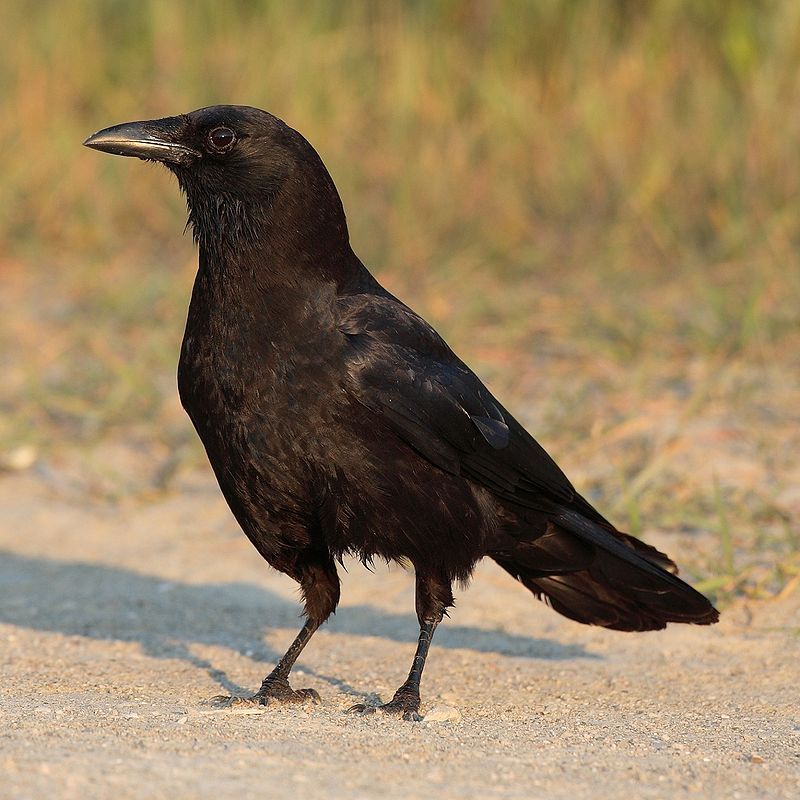
The American crow is a member of the Corvidae family, which includes birds such as crows, ravens, jays, and magpies. It is a common bird species found throughout much of North America and is considered the New World equivalent of the carrion crow and hooded crow of Eurasia.
All of these birds occupy the same ecological niche, which is defined as an area where a species can find food, shelter, and other resources necessary for its survival. American crows can be found in a variety of habitats, such as forests, grasslands, and urban areas.
They are omnivorous, meaning they eat both plant and animal matter, and often forage for food in groups. They are known to be highly intelligent and have a complex social structure, which includes the use of calls and gestures to communicate with other members of their group.
American crows are also adept at problem-solving and can be seen using tools to obtain food or other resources.
| Kingdom | Animalia |
| Phylum | Chordata |
| Class | Aves |
| Order | Passeriformes |
| Family | Corvidae |
| Genus | Corvus |
| Species | C. brachyrhynchos |
6. Song Sparrow
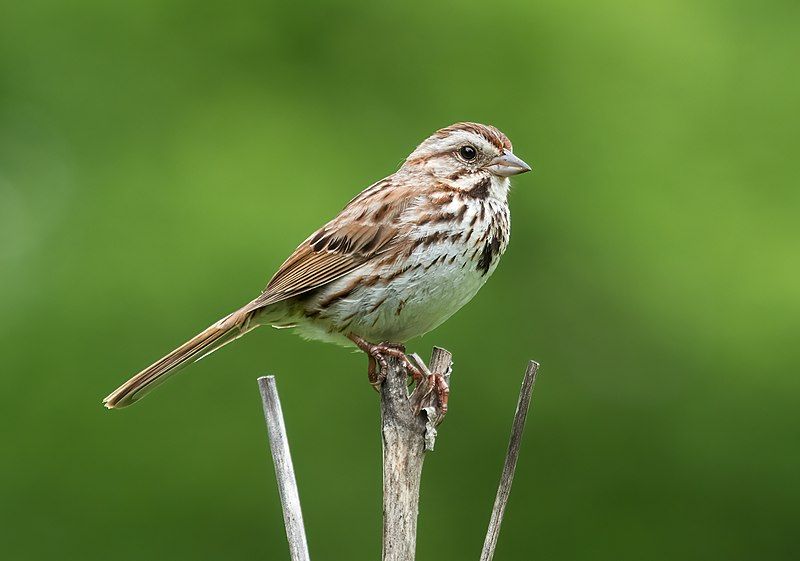
The song sparrow is a medium-sized sparrow that is native to North America. It is highly abundant and can be found in a variety of habitats. This species is known for its adaptability, being able to adjust to different environments and changing conditions.
This makes them ideal for living in both urban and rural areas. The bird is also quite variable, meaning that there is a wide range of colors and feather patterns among individual birds.
Additionally, this species has an impressive repertoire of songs that can be heard throughout the year, making them a favorite of many birdwatchers. All of this combined makes the song sparrow one of the most remarkable and well-known species of sparrow in North America.
| Kingdom | Animalia |
| Phylum | Chordata |
| Class | Aves |
| Order | Passeriformes |
| Family | Passerellidae |
| Genus | Melospiza |
| Species | M. melodia |
7. Dark-Eyed Junco
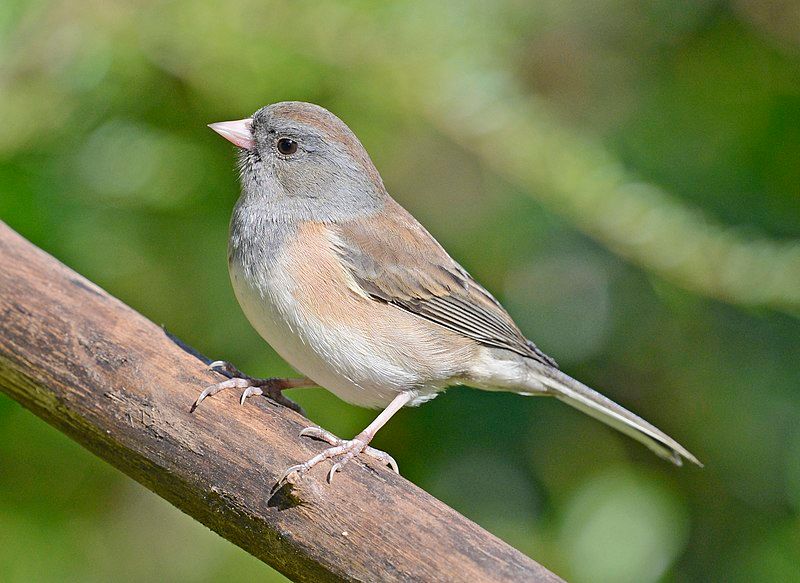
The dark-eyed junco is a species of the junco family, which consists of small sparrows that are typically gray in color. It is widely distributed throughout much of North America, including northern regions that experience summer temperatures.
This species is highly adaptable, much like the fox sparrow, and there is still some confusion surrounding its taxonomic classification. The dark-eyed junco is a small bird that usually ranges between 4.5 to 5.5 inches in length.
Its feathers are generally gray in color, with a black head and tail, and white outer tail feathers. It has a white belly and a pink bill. It has brown eyes and a white line above them.
The dark-eyed junco is a very common bird throughout its range, and it is seen in a variety of habitats including open fields, woodlands, and suburban areas. It feeds on seeds, insects, and berries.
During the breeding season, it builds a cup-shaped nest on the ground, usually near the base of a tree. It lays 3 to 5 eggs in the nest, and the female incubates them for 12 to 14 days. The dark-eyed junco is an important part of the ecology of its range.
Its presence can be beneficial to other species, as it helps to control insect populations and disperses seeds. It is also a popular species among birdwatchers, as it is relatively easy to spot and identify.
Although its systematics are not fully understood, the dark-eyed junco continues to be a beneficial and beloved species throughout North America.
| Kingdom | Animalia |
| Phylum | Chordata |
| Class | Aves |
| Order | Passeriformes |
| Family | Passerellidae |
| Genus | Junco |
| Species | J. hyemalis |
8. Western Scrub Jay
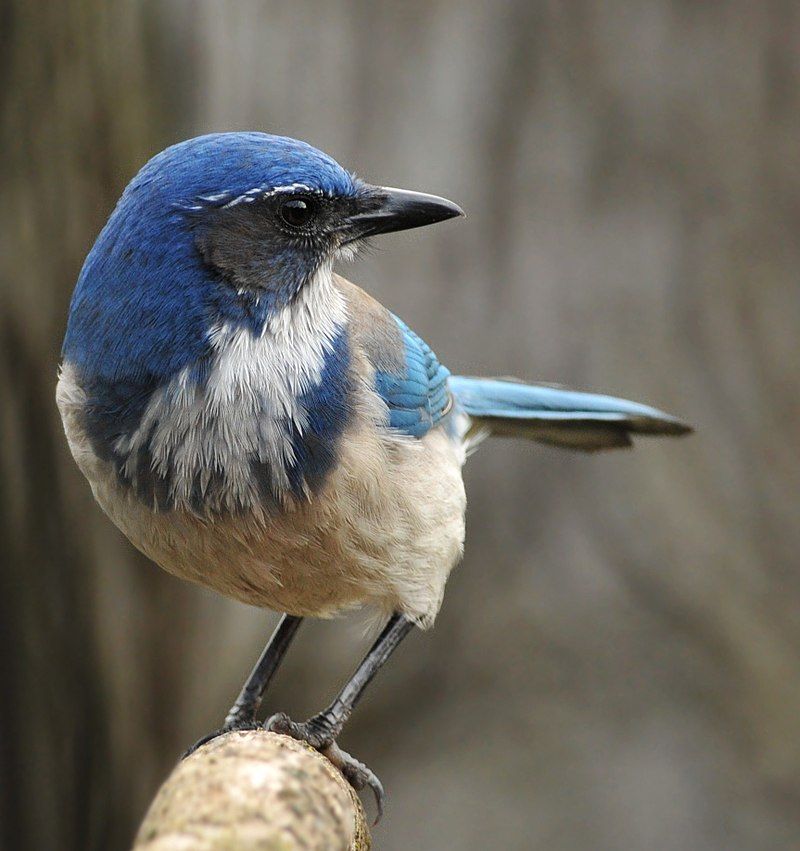
The California scrub jay is a species of bird that is native to western North America. Its range stretches from the southern part of British Columbia all the way through California and western Nevada near Reno, extending west of the Sierra Nevada mountain range.
This species of scrub jay is a medium-sized bird, with a body measuring around 30 cm in length and a wingspan of about 45 cm. Its back and wings are a bright blue color, while its underside is a light gray color.
On its head, the California scrub jay has a distinctive crest of feathers, which can range from black to brown. This species of bird is an omnivore, meaning that its diet consists of both plants and animals.
They are known to eat a variety of fruits, nuts, and insects, as well as small vertebrates such as lizards and eggs. California scrub jays live in family groups, with a breeding pair and several other birds which help to care for the young.
They are also known to be quite social birds, often seen in large groups, and even known to cooperate in food-gathering efforts.
| Kingdom | Animalia |
| Phylum | Chordata |
| Class | Aves |
| Order | Passeriformes |
| Family | Corvidae |
| Genus | Aphelocoma |
| Species | A. californica |
9. Yellow-Rumped Warbler
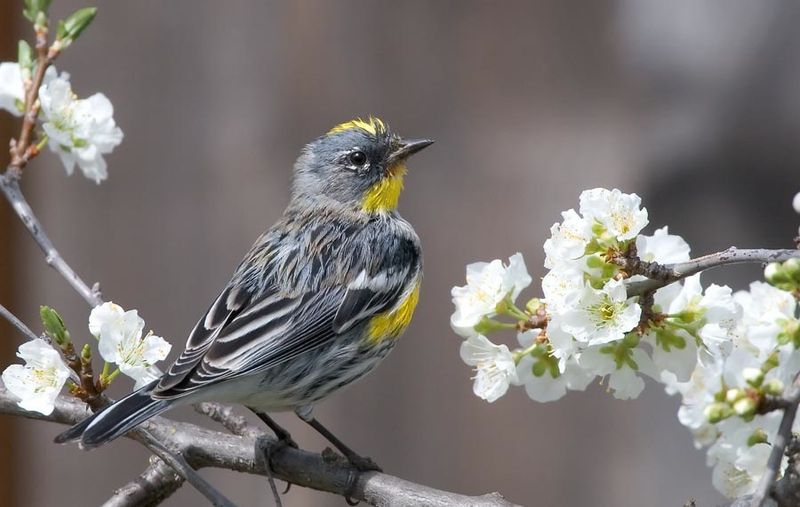
The yellow-rumped warbler is one of the most common bird species found throughout North America. It is easily recognizable due to its vivid yellow rump patch and bright white throat.
This species breeds in much of Canada and the United States and can be found in a variety of habitats including boreal and coniferous forests, woodlands, and shrublands.
During the winter, some of these birds migrate to Central and South America, but many remain in their northern range. The yellow-rumped warbler has a large diet consisting of insects, berries, and seeds, which it forages for in trees, shrubs, and on the ground.
It can often be seen hopping around the low branches of trees and shrubs in search of food. This species is a great example of the abundance of bird species that can be found across North America.
| Kingdom | Animalia |
| Phylum | Chordata |
| Class | Aves |
| Order | Passeriformes |
| Family | Parulidae |
| Genus | Setophaga |
| Species | S. coronata |
10. Black Bellied Plover
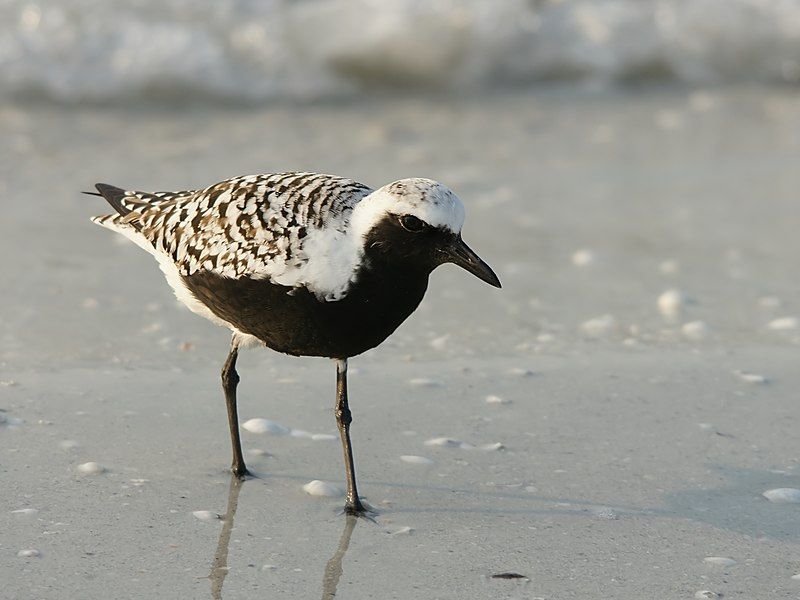
The grey plover, also known as the black-bellied plover, is a species of plover that is found in many areas around the world. This species is native to Arctic regions, where they breed and then migrate long distances in search of suitable habitat.
During the times when they are not breeding, they can be found in coastal areas throughout the world. The grey plover is a large bird, typically gray in color with a black belly.
It is a strong flyer and can travel hundreds of miles in a single journey in search of food and a suitable breeding site. The grey plover is an important species in the Arctic region, where it is a major food source for predators like foxes and Arctic wolves.
It is also an important part of the marine ecosystem, preying on small crustaceans and other invertebrates found in coastal waters. It is a species of least concern, meaning that it is not currently at risk of extinction.
Despite its widespread range, the grey plover is threatened by human activities like overfishing, pollution, and habitat destruction.
In recent years, there has been an increase in the human population in the Arctic region, which has led to increased pressure on the grey plover’s habitats. As a result, the species is facing a decline in numbers.
Conservation efforts are needed to ensure the survival of the grey plover and other species that inhabit the Arctic region.
| Kingdom | Animalia |
| Phylum | Chordata |
| Class | Aves |
| Order | Charadriiformes |
| Family | Charadriidae |
| Genus | Pluvialis |
| Species | P. squatarola |
11. House Wren
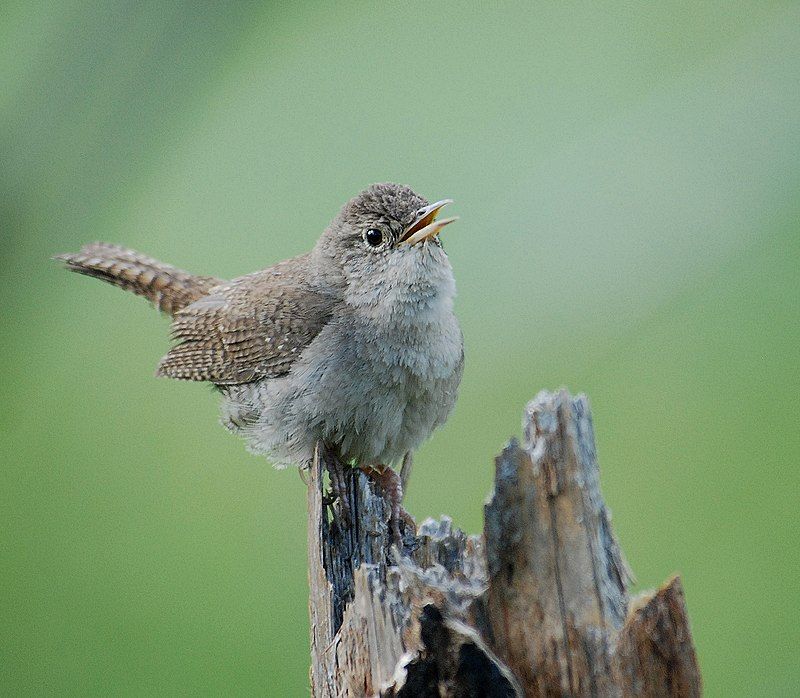
The house wren is a tiny bird belonging to the Troglodytidae family. It is the most widespread native bird in the Americas, as it can be found from Canada to the southernmost parts of South America.
This bird is a common sight in suburban areas and is the most popular wren species in its range. Its small size and ability to adapt to a wide variety of environments make it an ideal bird for urban and suburban habitats.
Its chirping song is a familiar sound in many neighborhoods, and its presence is often welcomed by bird watchers and nature enthusiasts alike. The house wren is a resilient species, and its population is stable throughout its range, making it an important part of the ecosystem.
| Kingdom | Animalia |
| Phylum | Chordata |
| Class | Aves |
| Order | Passeriformes |
| Family | Troglodytidae |
| Genus | Troglodytes |
| Species | T. aedon |
12. Savannah Sparrow
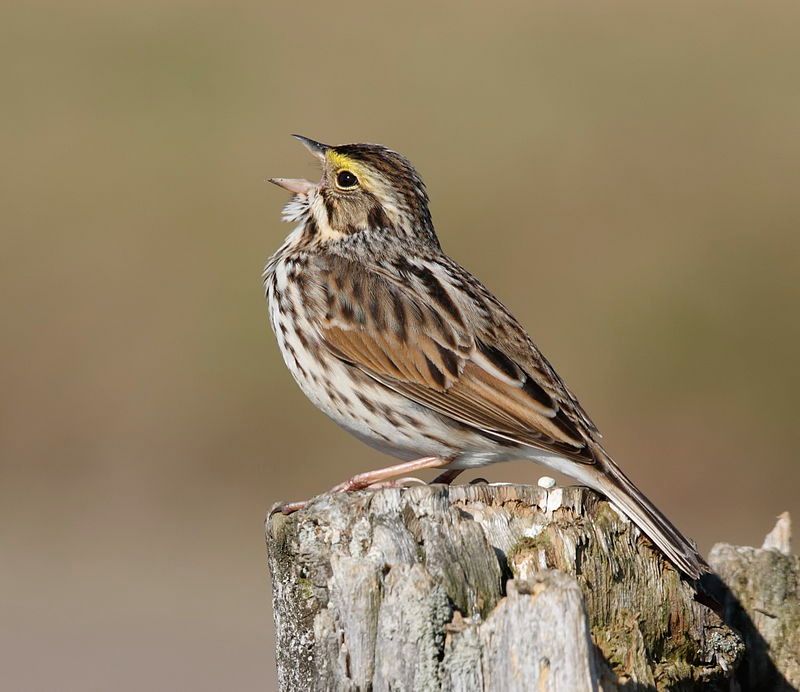
The Savannah sparrow is a small bird species that belongs to the family of New World sparrows. It is a migratory bird and is found in various habitats, ranging from grasslands to coastal areas.
It is a medium-sized bird, measuring around five inches in length, and is light brown in color. Until recently, the Savannah sparrow was the only member of the genus Passerculus, a group of sparrows that includes many other species.
However, recent studies have identified other species within this genus, although the Savannah sparrow remains the only widely accepted member. The Savannah sparrow is an important part of the ecosystem, as it serves as a food source for predators and also helps disperse seeds.
Its diet consists mainly of insects and seeds, and it is known to nest in thick vegetation, such as scrub or grasses. The Savannah sparrow is a common species and is listed as Least Concern by the IUCN Red List.
Although it is not threatened, its population is slowly declining due to habitat loss and fragmentation. It is therefore important to ensure that suitable habitats are maintained and protected for this species.
| Kingdom | Animalia |
| Phylum | Chordata |
| Class | Aves |
| Order | Passeriformes |
| Family | Passerellidae |
| Genus | Passerculus |
| Species | P. sandwichensis |
Conclusion
Culver City is home to a variety of bird species, including ducks, owls, hawks, and many more. These birds can be seen in parks, backyards, and in other areas around the city.
Bird watching is a popular activity in Culver City, and it is a great way to get outside and observe nature. With its diverse range of habitats and bird species, Culver City is a great place to explore the world of birds.